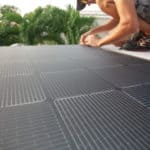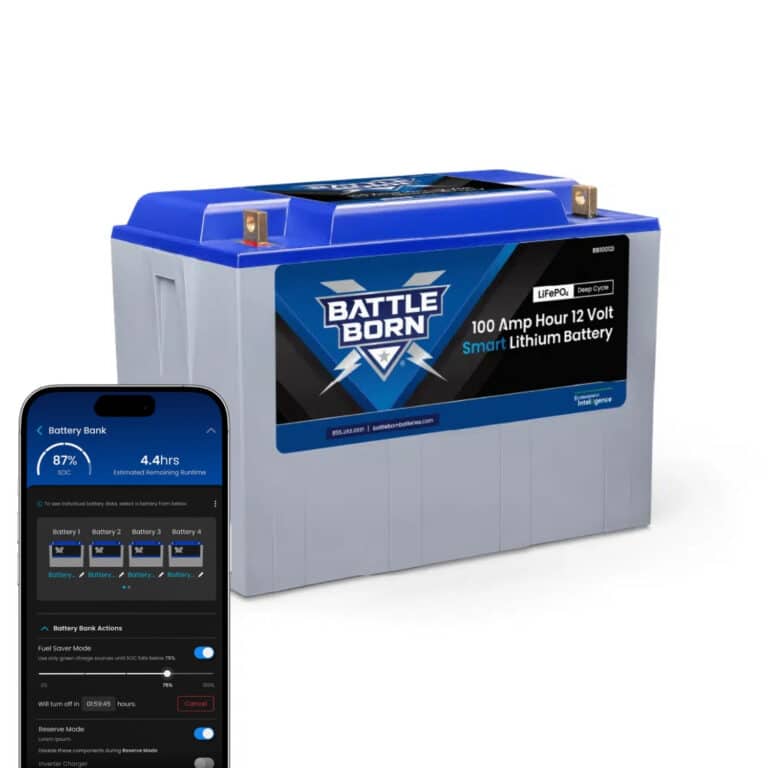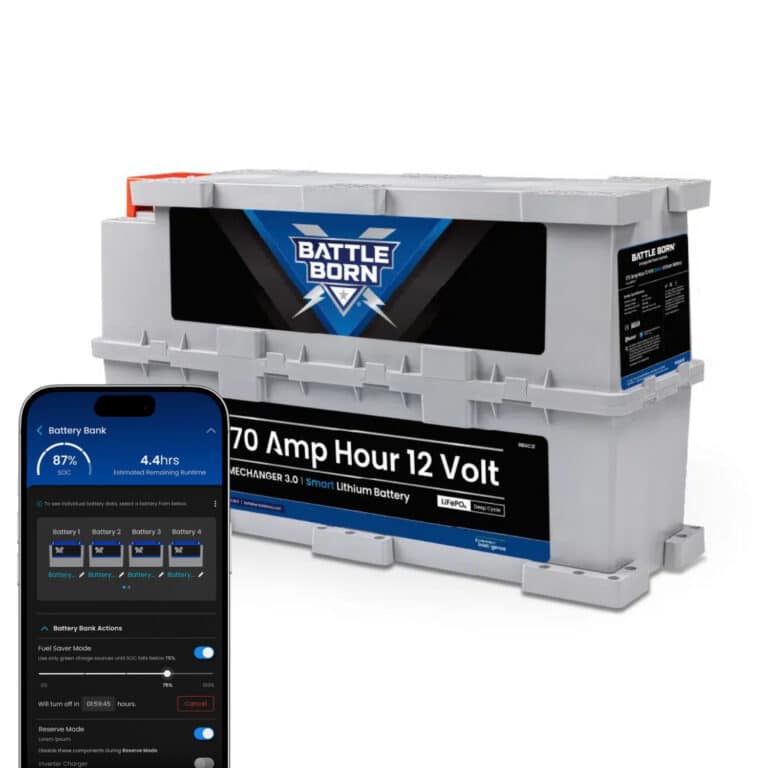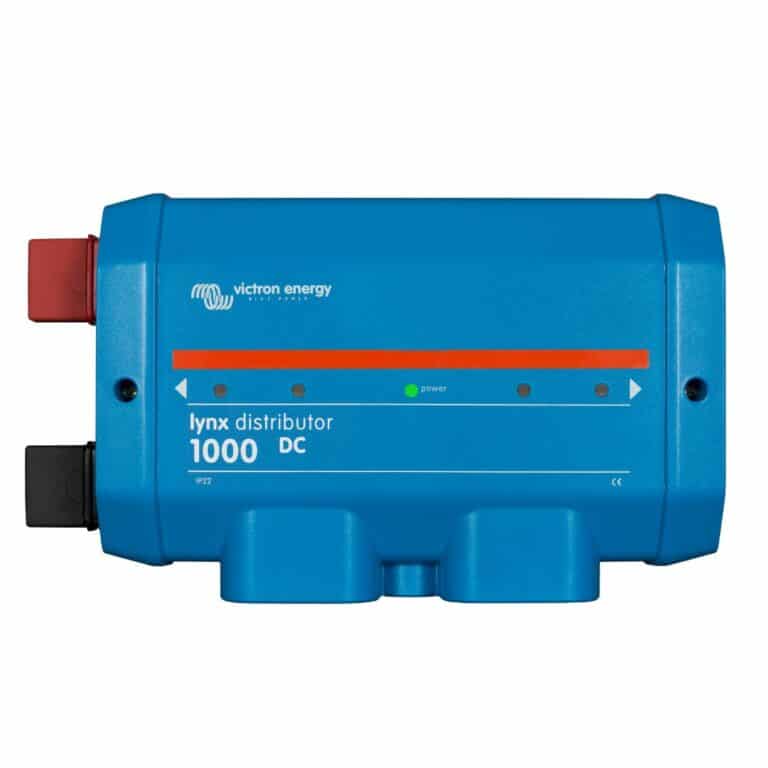
MENUMENU
TALK TO AN EXPERT
Special Hours: 7AM – 6PM PST
TALK TO AN EXPERT
Special Hours: 7AM – 6PM PST
Solar battery chargers are incredibly useful for boats out in the sun all day without access to shore power. Being able to harness the sun’s energy to fuel our tech-heavy lives is a fantastic feat. From the smallest fishing boat to the largest yacht, solar charging offers convenience and peace of mind when your battery is running low.

A solar battery charger generates electricity for your boat’s battery system no matter where you are, so long as you have sunshine. Solar chargers range from small trickle chargers for a trolling motor or some lights, up to thousands of watts that can power all your boat’s electrical needs.
A solar battery charger is not a single component but rather a combination of various components with different capacities for different applications. A solar battery charger consists of a solar panel (or multiple), a solar charge controller, and wiring to connect to the system together. In general, there are a few main applications ideal for the various sizes of solar battery chargers.

Trickle charging is optimal for lead-acid starting batteries and provides a very small amount of power to keep them healthy and ready to use. If shore power is not available, a small solar battery charger that can keep the batteries topped off and ready to start the engines is beneficial. These systems are also very cost-effective.
A small solar battery charger system that consists of around 100 watts can provide enough power for small electronics, fish finders, stereos, and charging phones during the day. These systems can be used on boats with one battery or connected to a house battery bank. Small solar battery charging systems are perfect for light use on boats that may not have other charging means while operating, such as small fishing boats, day-use sailboats, or speedboats.
Liveaboard yachts and sailboats require significant amounts of power and, consequently, heavy-use solar battery charging systems. Liveaboard vessels have a separate battery system used exclusively for lights, electronics, and large household appliances such as microwaves, TVs, and computers. These solar charging systems may consist of thousands of watts of solar collection to provide all of the day-to-day power needs for living on a boat.

Regardless of the size of the solar battery charging system, solar chargers on boats provide some excellent benefits when it comes to helping maintain your battery’s charge.
For liveaboard or cruising boats, you may not be near fuel or power sources regularly. Luckily, the sun’s energy is delivered to your boat free of charge every day. All you need to do is harness it. A solar electric system collects this energy anywhere the sun shines for your use whenever you need it.
Rugged solar boat battery charging systems can withstand harsh weather and marine applications. After the initial purchase, there are rarely other expenses or maintenance required.
Traditional gas generators are noisy and require continuous refueling. Even wind generators can be loud and cause vibration interrupting a peaceful day on the water. Solar battery chargers are silent and don’t require anything other than the sun to provide clean energy for your boat.

A solar boat charger consists of three parts: solar panels, a charge controller, and wiring.
The solar panels collect energy from the sun and convert them to electricity. However, the electricity from the solar panels is not conditioned for the batteries and could damage them if connected directly.
The solar charge controller ensures safe charging conditions by regulating the current and voltage flowing to the batteries.
Wiring and fuses connect the solar panels, charge controller, and batteries to complete the solar battery charging system.
When selecting a charge controller for the solar panels, you will see two primary options: PWM and MPPT charge controllers. PWM stands for pulse width modulation, and MPPT stands for maximum power point tracking.
A PWM charge controller uses electronics to rapidly pulse the current flow. The pulsing prevents the battery from overcharging by limiting the amount of current flowing to it. However, PWM controllers do not have any control over the charge voltage. This means that you need to select solar panels near or slightly above your battery system voltage.
MPPT charge controllers are also known as DC-to-DC converters and regulate both voltage and current. MPPT controllers can control the power on the solar panel side of the controller and the battery side. This enables the charge controller to find the maximum operating efficiency of the solar panels by holding the correct voltage.
MPPT charge controllers cost more than PWM controllers, but they’re also up to 30% more efficient. Additionally, MPPT controllers allow you to use much higher voltage solar panels, giving you more options.
The solar charge controller regulates the charging making it safe to leave the system plugged in without damaging the battery. In fact, with lead-acid batteries, keeping the solar charger on continuously can help maintain them and prolong their life. With lithium batteries, the solar charger will keep them full and ready to use.

The size of the solar panel depends on the amount of power you need. If you have a liveaboard boat with large household appliances, then you’ll need a higher wattage system. If you’re keeping a battery maintained for your radio and some lights, then you can get away with a smaller system.
You also need to consider how sunny it’s going to be, the time of year, and your latitude to get a reasonable expectation on how much power you’ll make. It varies a lot, but a good rule of thumb is that a 100-watt solar panel will generate around 350 watt-hours per day.
The size of your solar system will also depend on how much battery capacity you have installed. If you have a large battery bank and plan to use a lot of power at night, you need enough solar to recharge your battery bank, plus meet your energy needs during the day.
Solar panels can have a high upfront cost, but they’ll start paying for themselves and saving you money after the initial purchase. They’re eco-friendly, silent, and eliminate the need to refuel a generator. For many, the benefits of having solar power on a boat far outweigh the costs and drawbacks, making solar chargers for boats a great option.
Being out in nature is all about utilizing what resources you have. No one wants to be worried about running out of gas or not having enough power for appliances, especially when you’re out at sea. While you soak up some sunshine, let your solar battery charger for your boat do the same.

We know that building or upgrading an electrical system can be overwhelming, so we’re here to help. Our Reno, Nevada-based sales and customer service team is standing by at (855) 292-2831 to take your questions!
Also, join us on Facebook, Instagram, and YouTube to learn more about how lithium battery systems can power your lifestyle, see how others have built their systems, and gain the confidence to get out there and stay out there.
Shop Best Sellers








Ask a technical specialist now at 855.292.2831
Stay in the Know
2 thoughts on “What Is a Solar Battery Charger for Boats?”
looking for a solar panel/charger to keep my batteries charged while on anchor. Light use including small tv and radios while on anchor.
It really helped when you said that there are two options when it comes to solar battery chargers which are the PWM and MPPT used for panels. I wonder what is best for our boat if we are going to consider that source of energy. It just seems like a great choice to ensure that we always have electricity for our own safety out on the sea.